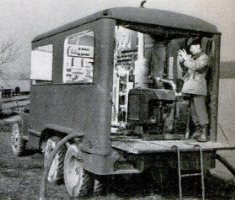-
Title (Dublin Core)
-
Soldier engineers
-
Article Title and/or Image Caption (Dublin Core)
-
Title: Soldier engineers
-
extracted text (Extract Text)
-
WHEN the army moves across-country,
the engineers have much to do with
moving it. Their maps have outlined the
route. Their roads carry the motorized forces
and supplies. Their bridges cross the rivers
which otherwise would block the progress of
the army. If rails have had to be laid to the
operating base, the engineers have laid them
and the trains are operated by engineers.
It is the engineers who are indispensable
in establishing bridgeheads in enemy terri-
tory. It is the engineers who plant mines
and tank traps on unprotected flanks. It is
the engineers whose camouflage protects
the artillerv positions and the supplv dumps.
In a pinch, when the enemy attacks in un-
expected force, it is the engineers who throw
down their picks and jack-hammers and
fight with rifles and machine guns.
Engineers always have been an important
factor in the conduct of war, but the ex-
ploits of the combat engineer troops of the
German Army in Poland and the Low Coun-
tries have put new emphasis on their duties.
It was these German pioneer troops, mov-
ing forward in some cases with structural
steel exactly fitted and marked for certain
bridge sites, who established bridgeheads.
It was these pioneers who stormed Eben
Emael, near Liege, and other forts, both in
the Low Countries and in France, which
had been deemed impregnable. Eben Emael,
rated one of the strongest fortifications in
Europe, lasted only seven hours after the
pioneers, backed by aerial bombardment
and parachute troops, got down to work.
Advancing in their own smoke screen, the
pioneers used flame-throwers and thermite
grenades and then thrust through the de-
serted ports long jointed rods, on the ends
of which were charges of explosive much
more destructive thana 75-mm. artillery shell.
U.S. Army engineers, a
large part of whom had been
employed in peaceful years on
flood control, harbor improve-
ments, and supervision of
‘Work Projects Administra-
tion jobs, did not neglect the
study of German methods,
though the German military
engineering policy as a whole
is not regarded as best
adapted to American needs.
The German pioneer forces
regard themselves primarily
as combat troops. The Amer-
ican Army engineers are pri-
marily technicians and the
American Army recruit, al-
most invariably mechanically
inclined to some degree, lends
himself to such use.
On June 30, 1939, the Amer-
ican Army numbered about
180,000 men, of whom 6,000
were engineers—one man in 30. On June
30, 1941, with 1,400,000 men in the Army,
85,000 of them, or one in 16, will be engi-
neers. In active warfare the proportion
probably would rise to one man in eight.
By the end of June each of the “square”
divisions, the major component of which is
four infantry regiments, will have a regi-
ment of engineers. Each “triangular” di-
vision of three infantry regiments
and each armored division will
have a battalion of engineers. Each
cavalry division will have a squad-
ron of engineers. Each army corps
will have one or two combat engi-
neer regiments and a topographic
company. Each field army will have
three regiments and six separate
battalions of general service engi-
neers, two dump-truck companies,
two heavy ponton battalions, four
light ponton companies, a topo-
graphic battalion, a camouflage bat-
talion, a water-supply battal- |
fon, a shop company, and a de-
pot company. Two regiments
of aviation engineers, trained
in construction of flying fields
in war zones, are attached to
General Headquarters Air |
Force, and separate companies
are stationed in Panama,
Puerto Rico, and Alaska.
Experiments are being made
constantly with methods of de-
fense and attack at the Engi-
neer School at Fort Belvoir, Va.
There are courses in technique
and tactics, surveying, draft
ing, map reproduction, water
purification, and heavy me-
chanical equipment. It has be-
come one of the largest special
service schools of the Army,
training 1,700 officers and 1,500
enlisted men annually.
Maintenance of roads and |
bridges and the construction of
new ones probably would be
the principal tasks of the engi-
neers in wartime. Military op-
erations are hard on roads, es-
pecially in this day of mechan-
ized armies. It was far from |
negligible even 25 years ago.
During the six-month battle of
Verdun, trafic over the road
between Verdun and Bar-le-
Duc wore down ten feet of
road metal in the aggregate.
The construction of new |
concrete roads is impractica-
ble close to the front. An 18 |
foot macadam road will meet |
the needs of an infantry divi-
sion fighting as far as 75 miles from its rail-
head. Every infantry division requires one
such road. Dirt, gravel, plank, or corduroy
construction will suffice for lighter traffic.
For quick construction a “tread” road is
built, supplying a bearing surface only for
the wheels.
At the front, road construction is mostly
by hand labor, though the combat engineers
are equipped with air compressors, bull-
dozers, and other power machinery which
can be used in some situations. It is planned
to provide modern equipment, most of it
too unwieldy for use at the front, for road
construction in the rear areas.
Bridge building is the most familiar and
probably the most spectacular of the feats
of the engineers. Their technique is whetted
to the point of getting troops across an un-
fordable stream under fire, an ordeal to test
the caliber of any engineer outfit. Such an
attempt would be made ordinarily either at
night or under a smoke screen, and the
technique must be proof against darkness
and confusion, as well as enemy action.
For such work, the engineers are
equipped with assault boats, light skiffs
sturdily built of quarter-inch plywood,
ten of which are carried in a light truck,
nested like the dories on a fishing schooner’s
deck. American officers prefer these to the
inflatable rubber boats carried by the Ger-
man pioneer troops. Each plywood skiff
carries eleven fully equipped soldiers, nine
of them infantrymen and two of them com-
prising the engineer crew.
In a recent test at Fort Benning, Ga., a
complete infantry rifle company was ferried
across the Chattahoochee River, there 320
feet wide and flowing four miles an hour, in
70 seconds through a smoke screen. A small
outboard motor is available for use on the
assault boats, but would be useful only in
unusual conditions, as silence and surprise
generally would be prime requisites.
All infantry weapons can be carried in
the individual assault boats except the 37-
mm. antitank gun. Several assault boats
can be quickly assembled into rafts to ferry
the antitank guns and the light trucks which
draw them. For crossing wide rivers, such
as the Mississippi or the Ohio, the engineers
have ponton boats that carry 58 soldiers in
addition to the crew and are driven by
large outboard motors.
Once the advance party has got a footing
on the far side of a stream, the engineers
rig a sectional footbridge, a duckboard foot-
way between whose slats the water is visible.
Soldiers familiar with this style of bridge
can cross it at a run in daylight. Familiarity
is desirable because, if the soldier looks
down at the water swirling under his feet it
makes him dizzy. Engineers threw a bridge
of this kind across the Chattahoochee at Fort
Benning in ten minutes, including installation of
the anchor cable. Soldiers crossed it at the rate
of 100 a minute.
Four 1%-ton trucks carry floats, duckboard
sections, and cables for the construction of such
a footbridge 432 feet in length. Under favorable
conditions, a bridge of that length can be con-
structed in the field in less than half an hour.
Regular ponton-bridge equipment may be
either light or heavy, the method of construction
being the same with each. Latticed steel or
aluminum supports are used in the shallow
water near shore and a flexible joint called a
saddle or hinge connects that part of the
bridge with the part which is supported by
pontons. Pontons are scow-shaped craft.
The light ones have duralumin frames and
aluminum skins and weigh about 1,400
pounds. Anchored at 16-foot intervals the
bridge they support will carry light field
guns, fully loaded three-ton trucks, and
even light tanks. Reénforced with extra
pontons they can be used by medium
tanks. A light ponton company carries
equipment for 1,000 feet of bridge and
builds about 100 feet an hour. Heavy pon-
tons are similarly made, weigh about 1 1/2
tons, and make a bridge that will carry
155-mm. guns and medium tanks.
The engineers also carry portable bridge
equipment for use where ponton construc-
tion is impracticable, including 72-foot-span
steel highway bridges of 20-ton capacity.
Officers of the Engineer Board at Fort
Belvoir have done much valuable experi-
mental work in camouflage
and a Los Angeles reserve
battalion, most of whose offi-
cers are motion-picture tech-
nicians, has accomplished re-
markable results in the cam-
ouflage of industrial plants.
Engineer officers have much
to do with developing me-
chanical equipment for other
branches of the service. They
have contracted recently for
$17,000,000 worth of search-
lights for antiaircraft artil-
lery. They were instrumen-
tal in the development of a
knee-action trailer for the
transport of 60-inch search-
lights and their power plants.
Four thousand of these trail-
ers have been ordered.
~~ The water supply for
troops, the erection of barbed-
wire entanglements, mine
planting, and tank trapping
are other details which occu-
Py the attention of the engi-
neers. Because of the possi-
bility that supplies of T.N.T.
might be limited in an emer-
gency, the engineers have de-
veloped their own explosive
which is practically as pow-
erful and as safe to handle.
The engineers are organ-
izing a railway operating bat-
talion, which will be stationed
near Alexandria, La., and op-
erate light trains over 90
miles of its own track. Such
a battalion, of about 800 of--
ficers and men, can maintain |
and operate a railroad divi-
sion 100 miles long. Most of
its officers will be railroad |
men who are in the reserve and the rank
and file will be men who have had railroad
experience.
The Army has 20 reserve railway-oper-
ating battalions, the officers of each of them
being from a different railroad. Should it
become necessary to mobilize these skeleton
battalions, the enlisted personnel of each
would be sought among employees of the
railroad furnishing its officers.
Even the recruits whom the engineers
have received through the draft have proved
to be excellent material, primarily because
of the natural mechanical aptitude of Amer-
ican youth. Partly trained men are availa-
ble in thousands for the Army engineers
from among the Reserve Officers Training
Corps students turned out annually by our
universities.
-
Contributor (Dublin Core)
-
Lieut Col. W. F. Heavey (article writer)
-
Language (Dublin Core)
-
Eng
-
Date Issued (Dublin Core)
-
1941-07
-
pages (Bibliographic Ontology)
-
103-112
-
Rights (Dublin Core)
-
Public domain
-
Archived by (Dublin Core)
-
Sami Akbiyik
 Popular Science Monthly, v. 139, n. 1, 1941
Popular Science Monthly, v. 139, n. 1, 1941
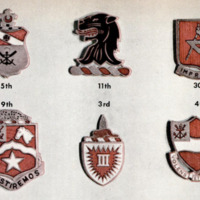 Screenshot_1.png
Screenshot_1.png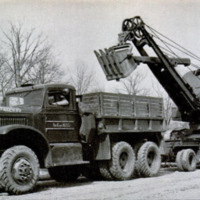 Screenshot_2.png
Screenshot_2.png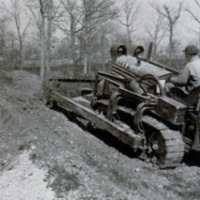 Screenshot_3.png
Screenshot_3.png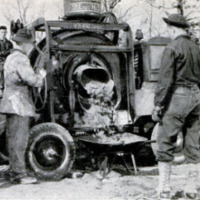 Screenshot_4.png
Screenshot_4.png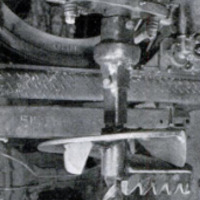 Screenshot_5.png
Screenshot_5.png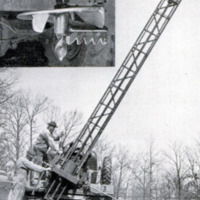 Screenshot_6.png
Screenshot_6.png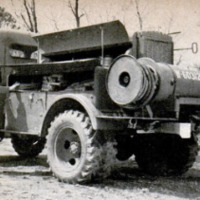 Screenshot_7.png
Screenshot_7.png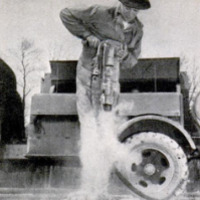 Screenshot_8.png
Screenshot_8.png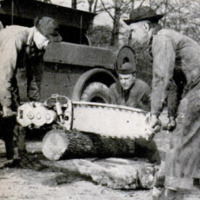 Screenshot_9.png
Screenshot_9.png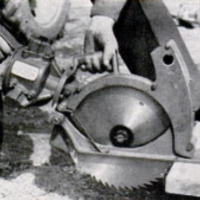 Screenshot_10.png
Screenshot_10.png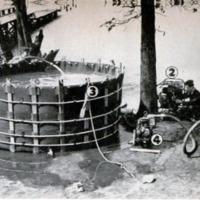 Screenshot_11.png
Screenshot_11.png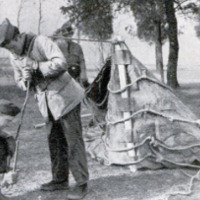 Screenshot_12.png
Screenshot_12.png Screenshot_13.png
Screenshot_13.png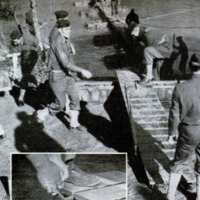 Screenshot_14.png
Screenshot_14.png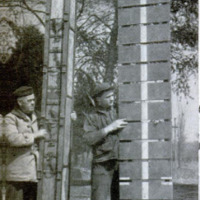 Screenshot_15.png
Screenshot_15.png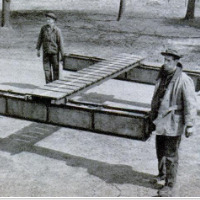 Screenshot_16.png
Screenshot_16.png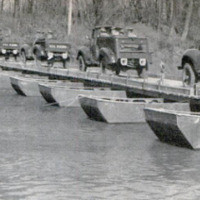 Screenshot_17.png
Screenshot_17.png












